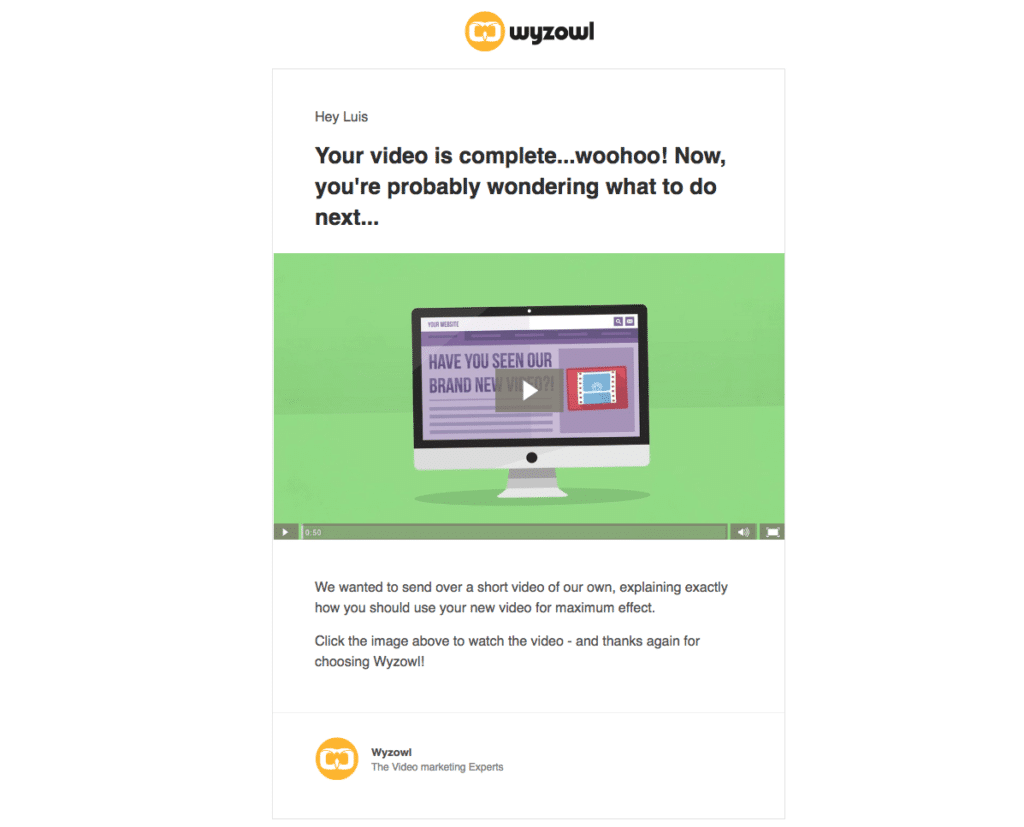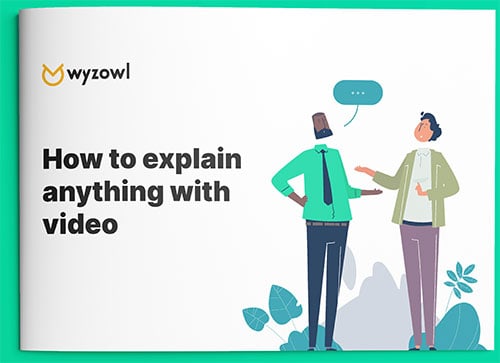Last updated on 25th January 2023
In this article we’re going to show you 7 amazing things you can do with an animated explainer video.
For most people, animated explainer video has a pretty narrow definition. It’s a video that lives on your home page, and tells attention-deficient visitors all about your product or service in 1-2 minutes.
But in reality – like the little engine that could – the trusty explainer video is capable of so much more.
In this article, we will look at some unexpected ways you can use an explainer video – and the reasons why you should!
Contents
1. Sales pitches
Pitching a new product or idea to potential customers or investors can be nerve-wracking, and you want to get it just right. Using an explainer video to start your pitch is a great way to get across the core value proposition of your product in an engaging – and repeatable – way.
You can go into the boardroom and open with the video. This gives you a moment to compose yourself ahead of the pitch – and can make a slick, professional first impression on your audience.
It’s best, to begin with a declarative statement, sell one or two of your features and then finish on an open-ended question, at which point you can pick up the baton and continue your presentation.
Check out this example from Cirrus LED, used to help sell their LED display services:
2. Shows/conventions
Trade shows and conventions offer a fantastic opportunity to network with potential customers and would-be partners. And, just like in a sales pitch, it’s important to get your message across quickly. You want people passing your booth to immediately get a flavour of who you are, and what you do, even if they previously had no intention of stopping to chat.
You can have an explainer video running on loop on a screen behind you. A good tip is to have captions on-screen, so people can still get the message of your video, even if they aren’t close enough to hear it, or – as is sometimes the case – you have to exhibit without sound.
Here’s a great example we created with our friends at Poppulo. The whole video revolves around text which animates throughout in a bold, dynamic way that’s really easy to understand.
Trade shows are busy, bustling places. You’re surrounded by competitors – if not directly, then at least competitors for the time and attention of show attendees. People want to get the most possible value from their time at shows.
And, just as an explainer video can help engage time-poor online visitors, it can help communicate your value proposition to time-poor physical visitors, too. They can stand and watch the video for a minute or two, then move along to their next stop. It gives you an opportunity to start conversations, but you may also find that a lot of them will want to talk to you.
3. Email marketing campaigns
Videos can do more than make your email marketing campaign look impressive. According to Syndacast, using the word ‘video’ will boost open rates by 19%, boost click-through by 65% and reduce unsubscribe rates by 26%.
There are a few different ways to use video in your emails. One is to incorporate it into your email workflows. Let’s say you offer a downloadable ebook or guide on your website, which is gated. When a visitor downloads that content, they share their email address which is typically routed automatically into an email nurture sequence. The first email you send will share that piece of content, but then, the job of a nurture sequence is to move that person along your sales funnel, gradually shifting the focus of conversation from what the content was about, to your products and services. Around the 3rd or 4th email is a great opportunity to share a video that introduces, in broad strokes, what it is that your product or service is all about.
You could also use video as a post-sales tool. Whenever a customer buys your product, you could share a video by email that demonstrates how to assemble it, or use it to the best of its ability. Here’s an email we send to our own customers as soon as their video project is complete:

And here’s the ‘how to’ video embedded within that email:
You can even use video to re-engage with old customers. New York Life used this animated video in their email marketing campaign to reconnect with existing customers:
4. Email signatures
On the subject of emails, did you know that 347.3 billion emails are sent across the world, every single, day?
Templafy report that an average worker sends around 40 business emails a day, and – on average – receives another 121.
Imagine if each of those emails had a short explainer video that sold your product or service on them? That’s a lot of people receiving that video who were already getting the email anyway!
According to TechSmith there are three steps to take when making a video signature:
- Making the video (decide on content, direction and look).
- Creating the video thumbnail (super important, as the video can’t be directly played in the email itself! So the thumbnail needs to entice the viewer).
- Add the signature to your email application (this will differ depending on which one you use, see options here).
5. Internal company training
It’s impossible to overstate the importance of training and onboarding new hires. The first few days of employment can often be critical in informing the long-term performance and sustainability of a new employee. The first few days involve the sharing of lots of crucial information and important processes.
The problem is, the human brain is like the proverbial sieve – even when we’re making a conscious effort to concentrate and focus. For all our best intentions, we simply aren’t wired to retain every piece of information we receive – and, unfortunately, when it comes to the point that we need a particular piece of information, if it isn’t there, it can cause problems.
This brings us to the value of video as a training tool. For one thing, it’s underpinned by educational neuroscience. According to The Social Science Research Network, 65% of people are visual learners.
Video is also repeatable, and can be revisited. This means all your new hires can get the same level of information – no little gaps because your trainer forgot to cover something important on day three. AND, if there’s something they were told but forgot – smart businesses are increasingly offering internal content repositories where they can head to and fill in the blanks of their knowledge.
Rapid Learning Institute use a great example to train a really complicated topic. The video doesn’t go into loads of detail – it doesn’t need to, but the framework is there and can be built upon if necessary:
6. Recruitment
According to Entrepreneur, 75% of companies that have been recognised for their amazing recruitment techniques use video as part of their strategy.
All of the companies claimed that having the videos attracted better-qualified candidates. So it doesn’t only benefit the applicants, but also the recruiters.
Recruitment videos that lend themselves well to animation are:
Process videos: allowing an applicant to see how your company works, and how the recruitment process will play out.
TPP has a fantastic video, explaining their company and the job role they are advertising for, it has a mixture of facts and fun!
Tips and tricks videos: another way of using video in recruitment that can help the recruiters! Any dos or don’ts of your company’s hiring process, will help you to wean out unqualified candidates.
Company culture videos: Answer the question ‘Why work for us’. A short video, can not only help candidates decide whether to apply, but also bring your company to life.
A great example of a company culture video, is this one by Dropbox, it’s quirky and fun but still carries the message across in great detail.
7. Paid adverts on social media
In the past, you were only allowed to have static ads on the likes of Facebook and Twitter.
But now, video ads dominate. According to our Video Marketing Statistics 2023, Facebook is the second most widely used platform for video marketing, only just behind YouTube.
It’s the ideal way to reach your perfect customer! Facebook, in particular, allows you to target your audience. You can choose the people you want to reach, using ‘core audiences’. The feature allows you to reach people based on their demographics, location and interests.
Custom audiences: can help you target your existing customers. Enabling you to foster relationships and drive sales.
Lookalike audiences: helps you find people who are like your customers. It uses insight you’ve gained to increase your chances of reaching the right people.
So, combining a well made explainer video with these targeting tools is a recipe for success!
Final thoughts
These are a few examples of how explainer videos can be used in an unconventional way, and how using them can make your company stand out from the competition.
Inspired to have one of your very own? Contact Wyzowl!
To see some great examples of brands really nailing it, take a quick look at our ultimate list of the best explainer videos ever!





